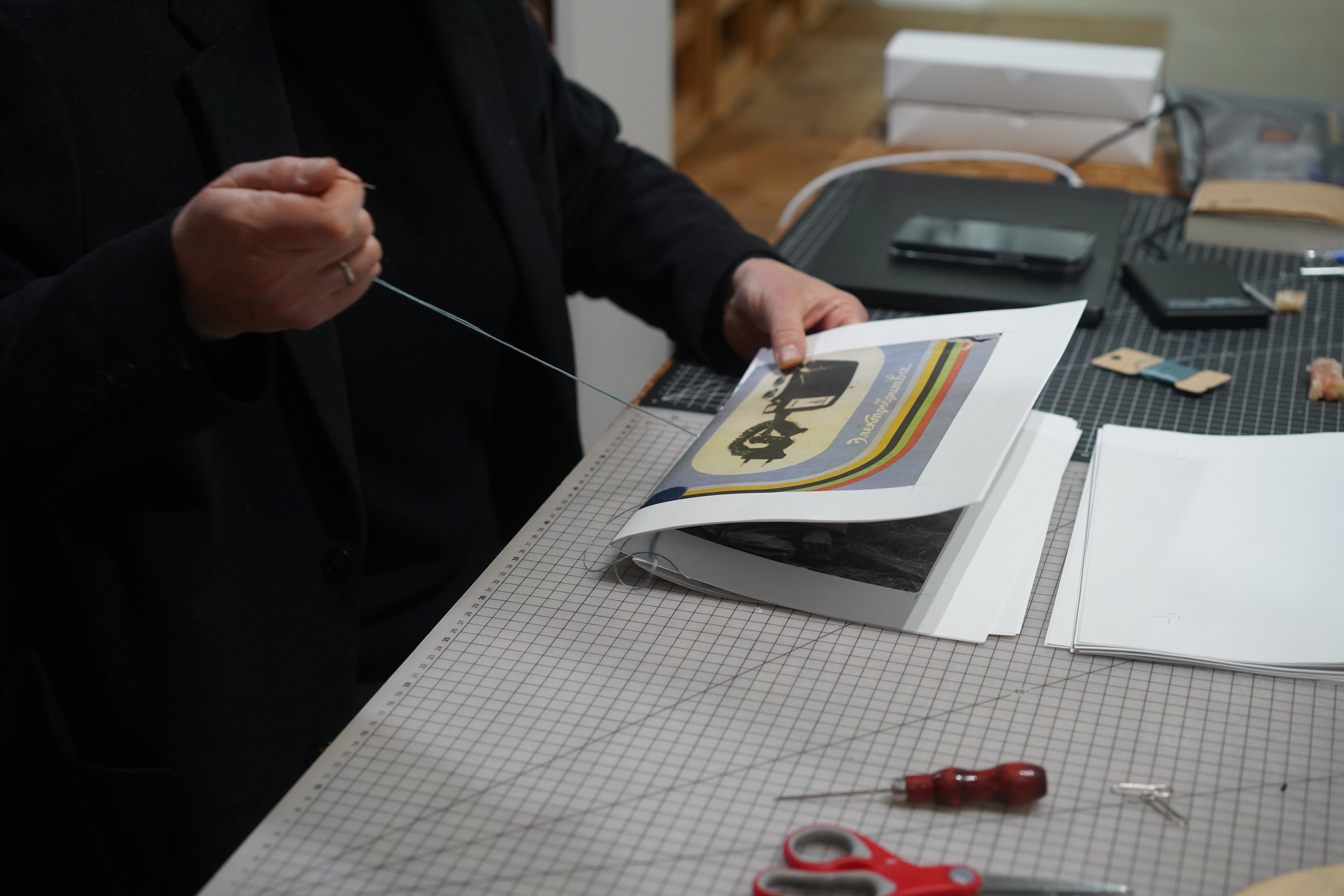Bringing Binom to Life: The Challenges of Self-Publishing
Photo by Nata Drachinskaya
Some time ago, I completed the self-publishing process for my photobook BINOM during a residency at Reminders Photography Stronghold (RPS) in Tokyo. Over the course of one intense month, I produced an edition of 92 copies. In truth, the journey took nearly five years—spanning the COVID period, and my family’s migration across several countries. The final stage—the physical making of the books—took four focused weeks, filled with planning and precision.
Thanks to the support of my curator, Yumi Goto, and the preparatory work we both did in advance, I was able to dive into a structured and thoughtfully designed process.
This wasn’t my first time at RPS. In 2022, I attended the Photobook as Object workshop, mentored by Yumi Goto and Jan Rosseel. It was during that time that the book’s form finally emerged. Now, BINOM is available for order here.
This year, I returned as a resident artist to complete the project. The residency was filled with events, conversations, meetings, and emotions. In this post, I want to share three key challenges I faced during that time. I hope they might resonate with fellow artists, or even be helpful.
1. The Difficulty of First Steps
The most difficult part, mentally, was producing the first three copies. It felt like trying to move a mountain with bare hands. My mind shouted: “Look how long it took to make just three! And we have nearly ninety more to go. This is impossible.”
In those moments, I drew strength from my experiences with the body—through sports, childbirth, injury, and surgery. Each of those chapters required me to begin again from zero, to feel small and weak, facing a distant goal. What I learned through those experiences is simple but powerful: take small steps. At the beginning of a long road, overthinking can paralyze you. So I turn on what I call my “machine mode.” I say to myself not to reflect, and just do the work—mechanically, steadily—until flow returns, and just do the work—mechanically, steadily—until flow returns.
Photo by Miki Hasegawa
2. The Anxiety of Time
Because my time at RPS was limited, I often felt anxious about progress. Each time visitors came to the exhibition, a voice inside whispered:
“Stay quiet. Keep working. Don’t speak too long—you’ll lose valuable time.”
Still, I chose to speak as long as it was needed with almost every guest. I decided I’d rather stay up later working than miss the opportunity to connect. Every conversation felt like a gift: a woman who lived in the neighborhood, a photography teacher from Connecticut, Japanese photographers and journalists and others. Each encounter brought me new thoughts, new questions, new energy. I hope the exchange was mutual.
Another inner conflict was whether to go out and explore or stay in and work. From the start, I told myself this residency wasn’t about tourism—it was about finishing the book. But I also knew I needed breaks to reset my mind and body. So I made a deal with myself: after completing my daily workload, I’d go for some walk at night.
That became my ritual—exploring Tokyo’s streets after dark. The city at night has its own spirit, a mysterious blend of futuristic glow and ancient echoes.
Photo by Miki Hasegawa
3. Technical Troubles with Printing
Of course, technical issues emerged—especially with the printer.
The first challenge came during color tests. I had reference prints from inkjet and digital offset processes, but I was printing on a laser machine. The results were different. It took me time to accept that each method produces its own unique output.
After some trial and error, I adjusted the colors in Photoshop and tweaked printer profiles until I reached a result I could accept visually.
Later, unexpected shifts happened: a cartridge replacement, then a drum replacement—each one altered the colors, requiring manual corrections. It was frustrating, but I learned to adapt quickly and stay focused.
Photo by Nata Drachinskaya
Challenges are inevitable in any living process. So many actors—human and non-human—are involved. For artists, the goal is not to avoid challenges, but to meet them with presence and flexibility. To stay calm in the face of panic, and to find methods that keep the process moving. To be ready for challenge is to be the best collaborator to yourself—and the most patient teammate when something unexpected happens.
You can order BINOM here.









